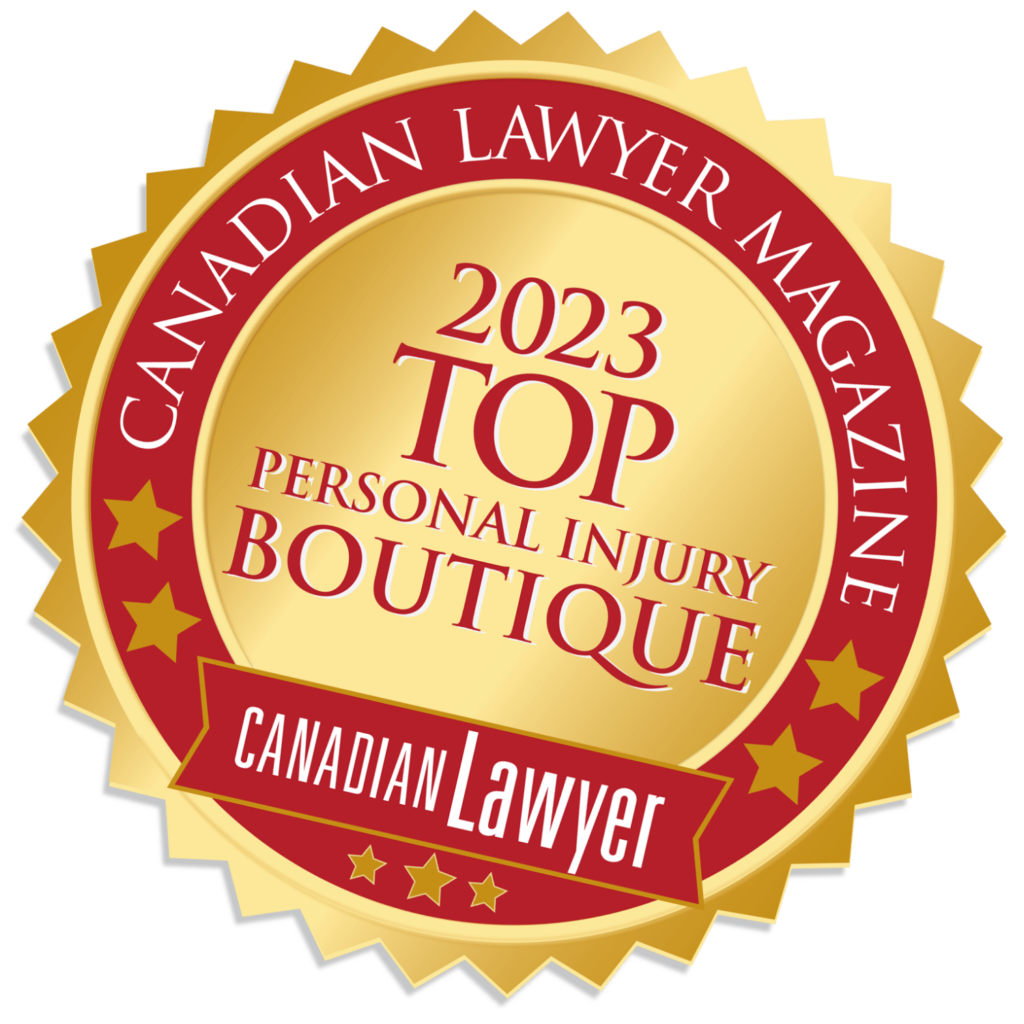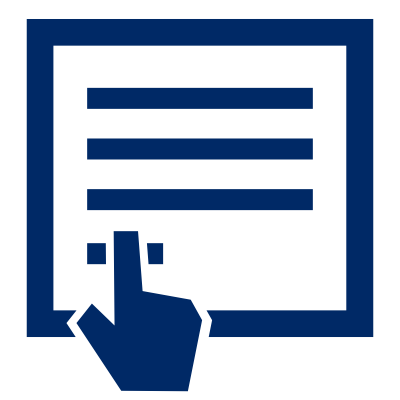
1. Know your client
It may seem trite but the most important thing you can do to make sure that you maximize the value of an accident benefits claim is to get to know your client. Make sure that your client is getting all appropriate treatment for his or her injuries. Find out if the client had any optional benefits purchased on their accident benefits policy and make sure that they are accessing those benefits. Talk to the client about potential collateral sources of benefits such as extended health benefits.
If your client is not attending treatment, make sure that you speak to the client and find out why. If it is because the client has been denied treatment by the insurer and cannot afford treatment, than make sure that any and all collateral sources of payment for treatment have been explored. Perhaps you will be able to arrange some limited treatment on a protected basis. At a minimum, make sure that the insurer knows that the client desires and needs treatment but is not getting it due to their financial circumstances and the insurers denial of treatment.
Again, it seems trite but it is easy when dealing with the mountains of paperwork involved in a personal injury file to lose sight of the fact that the single best source of information about the client’s condition and is usually the client themselves.
2. Assessments vs. Treatment
In terms of maximizing the value of the claim upon cash-out, money spent on treatment is always preferable to money spent on assessments. It is very important that you do not let clinics get carried away doing useless assessments that use up the client’s funds but do not translate into concrete treatment recommendations that are of benefit to the client. The purpose of accident benefits coverage is to provide treatment to help our clients get well and the best use of those funds is for treatment. This also is the best way to ensure that when you are cashing the file out, the insurer will recognize the future needs of the client and the client will get the best recovery.
3. Follow-up
When assessments are carried out it is vital that you ensure that the client is following up on the referrals and recommendations made in those assessments. Similarly, it is vital that the recommendations for treatment made by the family doctor, in the tort med-legal reports, and even in IEs or defence reports are followed up. By exploring and following up on these treatment recommendations the client benefits by, hopefully, getting necessary treatment and your task in establishing the future need for treatment at cash-out becomes much easier.
4. Attending treatment sessions
This brings us back to point number 1. It is essential to maintain contact with the client regularly throughout the file. Just getting quality assessments that have made good treatment recommendations and making sure that the appropriate OCF-18s have been submitted and approved is not enough. We have to make sure that our clients are actually attending the treatment sessions. If a client is not attending treatment, it is our job to identify the barrier to treatment. If its transportation, the need for a rehab support worker to accompany the client to treatment, psychological barriers, mobility barriers, or something else, by staying in touch with the client we can identify these concerns early and deal with them.
From the insurers prospective, a client who has had treatment approved but is not utilizing that treatment without any explanation is a client who simply doesn’t need treatment. Once the insurer has formed this opinion it can be very hard to disabuse them of that view and it will colour the way the file is handled. Adjusters are only human and it is easier to form an opinion than to change it. Therefore, it is vital to stay in touch with our clients and make sure that these difficulties are caught and addressed as soon as possible.
5. Accessing all available benefits
As discussed above, it is important that your client identify and make attempts to access his or her collateral benefits as the insurer is entitled to a deduction in some cases even if no benefit was received due to a failure to apply for it. Further, they can help establish need and make sure that treatment is received even where OCF-18s have been denied.
Further, when dealing with attendant care, family members often feel best suited to provide this care but that creates some significant legal hurdles in terms of getting the benefit paid. You should give strong consideration to using professional help such as a PSW to provide the attendant care which will have the benefit of giving family members some respite (in the early years of a claim, family members may not fully appreciate their need for respite in order to be there for their injured relative over the long term). This will ensure that your client is getting the full benefit of the attendant care and that the insurer has a full appreciation of your client’s attendant care needs given that they will be paying for it in accordance with the Form 1 and not at some lesser rate as determine by a family member’s economic loss.
This also applies to optional benefits such as housekeeping. Give serious consideration to using a professional service that is arms length from the client. Should the client ever find themselves in an arbitration over the benefits, the evidence coming from an arms length independent service provider will certainly be beneficial to their case.
6. When should you cash out
Once the client has a clear prognosis and you can determine the client’s future medical rehabilitation and attendant care needs with some certainty, then and only then should you turn your attention to cashing out the SABS claim. It is also very important to consider the interplay between the SABS claim and the tort claim with respect to collateral benefits and deductions that either the tort or accident benefits insurer may be entitled to as a result of the resolution of one or the other claims.
If there is a significant liability concern on the tort side, it can be very dangerous to cash out the SABS claim before the tort claim settles as the tort insurer will receive a dollar for dollar credit after the apportionment of liability with respect to the settled SABS benefit. Furthermore, if you do intend to cash out your SABS claim prior to the resolution of the tort claim the client must be advised that not only will the tort insurer get a credit for some of the SABS settlement (a credit they would likely get in any event) but that the tort insurer will also be looking to ensure that SABS money received for treatment and therapy was indeed used for treatment and therapy.
7. Factors to consider before cashing out your claim
- The client’s prognosis
- A precise accounting of all benefits paid to date
- Is the client’s claim catastrophic, non catastrophic or on the border line?
- What weekly benefits is the client entitled to? (don’t forget post 65 income replacement benefits etc)
- What is the client’s age and life expectancy?
- Do you need a future cost of care report or do you have a stable enough burn rate that it can accurately predict future need?
- Do you need a structured annuity quote with respect to the value of the future benefits?
8. Settlement Discount
Once you have gone through the checklist above and satisfied yourself that you can accurately estimate the total value of your client’s future entitlement to benefits.
In a clear catastrophic case with established burn rates for a young client where it is very clear that the limits of the policy will be exhausted, the settlement discount will obviously be extremely modest as there is no real dispute that the limits will be exhausted and offering any discount at all is simply a practical matter to allow the client to have control over the money rather than to continue to have the file adjusted until the limits are exhausted.
If, however, as with many cases there is a legitimate and significant dispute as to whether the client will be found to be catastrophic or not, the task of determining the appropriate settlement discount and litigation risk is much harder. You must turn your mind to the weaknesses of your catastrophic reports and try to make an estimate of your client’s realistic chances of success to determine how much if a discount from the full value of the claim the client should be willing to accept in order or achieve settlement. Bearing in mind of course that the alternative to settlement is arbitration and if a client loses on the catastrophic determination question at arbitration the results for the client are disastrous.
Similarly, with a clearly non-cat claim the determination of the appropriate settlement discount will turn upon the consistency of treatment, the likelihood that the benefits would be exhausted if the claim continued to be adjusted, the likelihood that the client would either improve with time or deteriorate as the client ages.
9. Conclusion
In conclusion, while all of the strategies outlined above will help to maximize the value of our client’s accident benefits claims such as utilizing PSWs, minimizing assessments and maximizing treatment, or cashing out at the most opportune time in conjunction with the tort file, the fact remains that the single most important factor is knowing and maintaining close communication and contact with your client.
As difficult as it can be with a busy practice and the mountains of paperwork that you are responsible for as a clerk, it is recommendations and referrals are being followed-up on and to make sure that the client is receiving necessary treatment and that unnecessary or unhelpful assessments are being avoided. The client will be the best source of information with respect to their available collateral benefits and the client will be able to tell you how they are feeling and confirm the medical prognosis that you have on the file.
If there is one take away, it is that the value of client contact and communication cannot be over stated and that by maintaining good client communication is absolutely vital of the proper conduct of a personal injury file.






